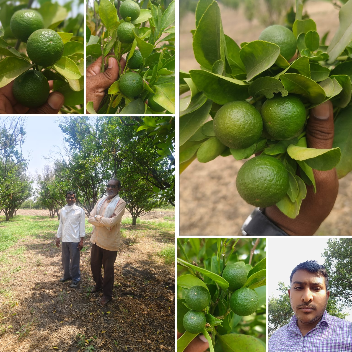Is your soil silently screaming for help? Rejuvenate its potential with these revolutionary practices!

Soil health is crucial for sustainable agriculture and ecological balance, forming the basis for productive farming and resilient ecosystems. As food demands rise and environmental challenges grow, effective soil management becomes essential. This document highlights methods to enhance soil health, such as cover cropping, crop rotation, reduced tillage, and the use of organic amendments. By adopting these practices, farmers can boost soil fertility, increase carbon sequestration, and combat climate change, leading to more productive and environmentally friendly farming. Through understanding and applying these techniques, we can ensure the longevity of our agricultural lands and contribute to a healthier planet.
A. Practical Soil Management Practices to Enhance Soil Health
Cover Cropping Cover crops are plants grown to cover the soil rather than for harvest. They help improve soil health, reduce carbon footprints, and prevent soil degradation.
Benefits of Cover Crops in Maintaining Soil Health:
Prevents soil erosion, reducing soil loss by up to 90% in some cases.
Enhances soil fertility by fixing nitrogen (especially legumes like pea, lentil, or chickpea), potentially reducing synthetic nitrogen fertiliser needs by 20-30%.
Improves soil structure and increases organic matter, leading to a 5-10% increase in water holding capacity.
Different Types of Cover Crops and Their Roles:
Legumes: Fix nitrogen in the soil, reducing the need for synthetic fertilizers.
Grasses: Prevent erosion and improve water infiltration.
Brassicas: Break up compacted soils and improve water movement.
- Implementation Strategies for Cover Cropping: In India, farmers can integrate cover crops during the off-season, especially in areas prone to erosion or nutrient depletion. For example, farmers in Haryana and Punjab use mustard and clover as cover crops.
- Crop Rotation and Diversity Crop rotation involves growing different crops in a sequential manner, which helps maintain soil health and reduces the need for chemical inputs.
- How Crop Rotation Improves Soil Structure and Nutrient Cycling: Crop rotation prevents the depletion of specific nutrients. For example, legumes restore nitrogen levels, while cereals use it up. This cyclical approach helps improve soil fertility and carbon storage.
- The Significance of Biodiversity in Farming Systems: Biodiversity in farming systems enhances resilience to pests, diseases, and climate extremes. A diverse crop system can also attract beneficial insects, reduce soil erosion, and improve carbon sequestration.
- Examples of Effective Crop Rotation Plans: - Rice-Wheat-Pulses: Common in the Indo-Gangetic plains, this rotation improves soil fertility and reduces the carbon footprint of farming. Studies suggest this type of rotation can increase soil organic matter by 15% over 5 years compared to monoculture and reduce pest pressure by up to 40%. - Cotton-Soybean-Mustard: A rotation system used in parts of Maharashtra and Gujarat to break pest cycles and improve soil health.
- Reduced Tillage Practices Reduced tillage involves minimising soil disturbance during land preparation.
- Advantages of Reduced Tillage on Soil Composition:
- Maintains soil structure and prevents erosion.
- Enhances organic matter retention, which helps sequester more carbon, increasing soil carbon by up to 10-15% over several years.
- Increases water retention, sometimes as much as 20-30%, and reduces irrigation needs.
- Comparison of Tillage and No Tillage Systems:
- Tillage disrupts the soil, releasing stored carbon into the atmosphere.
- No-tillage or minimum tillage enhances soil health and carbon sequestration.
Guidelines for Implementing Reduced Tillage: Farmers can start with minimum tillage and gradually move toward no-tillage systems. In regions like Punjab and Uttar Pradesh, thispractice has proven successful for wheat and rice farming
B. Organic Amendments and Fertilization Techniques
- The Role of Compost and Organic Matter
- Types of Organic Amendments and Their Benefits:
- Compost: Enhances soil fertility, structure, and microbial activity.
- Green Manure: Legumes and cover crops that are tilled back into the soil to improve organic content.
- How to Create and Apply Compost Effectively: Farmers can create compost by mixing carbon-rich materials (e.g., straw, leaves) with nitrogen-rich materials (e.g., manure, food waste). The compost can be applied during the pre-planting phase or as a top dressing.
- Geoxol.com is the farmer’s best choice. After using Geoxol.com, farmers have observed up to 30% growth in Organic carbon of the soil.
- Long-term Impacts of Organic Matter on Soil Health: Organic matter increases soil organic carbon, improving water retention, nutrient cycling, and microbial activity.
- Biochar in Soil Health Management
- Explanation of Biochar: Biochar is a form of charcoal produced from organic material. When added to soil, it improves soil structure and increases carbon storage.
- Potential Benefits of Biochar Application:
- Improves soil fertility, increasing crop yields by up to 25% in some studies.
Enhances water retention.
- Helps sequester carbon long-term.
- Steps for Incorporating Biochar into Soil Management Plans: Farmers can mix biochar with compost or manure before applying it to the soil. Application rates can vary, but 2-5 tons per hectare is common.
- Nutrient Management Strategies
- Balanced Fertilization: Farmers must use the right amounts of nutrients based on soil tests to prevent nutrient imbalances. The overuse of fertilizers not only harms soil health but also increases emissions of nitrous oxide, a potent greenhouse gas.
- Organic vs. Synthetic Fertilizers:
- Organic fertilizers (compost, manure, and products such as Geoxol.com) improve soil structure and microbial health. Geoxol.com, a type of manure, has been shown to increase soil carbon upto 30%.
- Geoxol WSL is a nutrient fertilizer that optimizes nutrient delivery.
- Mycoxol 4g and Mycoxol granules are mycorrhizal biofertilizers that enhance nutrient uptake by plants.
- Synthetic fertilizers can increase soil acidity and reduce microbial diversity.
C. Innovative Technologies Enhancing Soil Health Practices
- Precision Agriculture Technologies Precision farming technologies like drones, soil sensors, and satellite imagery help monitor soil health and optimize resource use.
- How Technology Informs Soil Management Decisions: Sensors and drones can provide real-time data on soil moisture, nutrient levels, and crop health, enabling farmers to make data-driven decisions that improve soil health.
- Soil Monitoring and Data Analysis
- Importance of Data Collection: Regular soil testing helps farmers understand nutrient deficiencies, pH levels, and organic matter content, guiding efficient and sustainable farming practices.
- Practical Applications for Farmers: Farmers can use mobile apps like Soil Health Cards and Nutrient Management Apps provided by the government to monitor soil health and apply nutrients as needed.
- Integrated Pest Management (IPM) IPM combines biological, mechanical, and cultural methods to control pests without harming the environment or soil health.
- Benefits of IPM for Ecosystem Sustainability: IPM reduces reliance on chemical pesticides, thus protecting soil biodiversity and improving long-term soil health.
Conclusion
Incorporating soil health practices like cover cropping, reduced tillage, organic amendments, and precision farming can help farmers improve their soil health, reduce carbon footprints, and increase farm sustainability. By prioritizing soil health, farmers can mitigate climate change, reduce environmental impact, and ensure food security for future generations. Lets work together to create a healthier planet through healthier soils.

